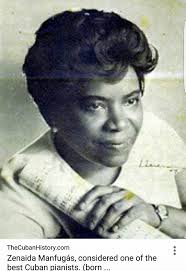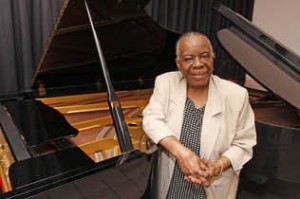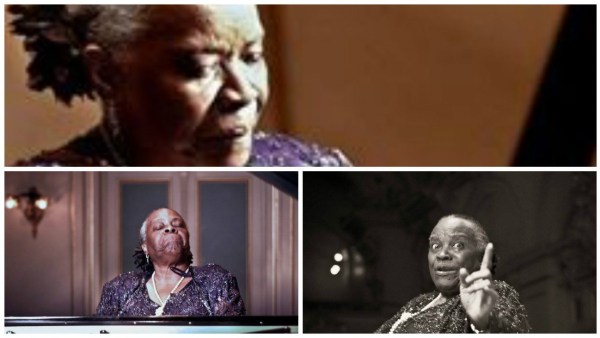 UNA DE LAS MEJORES PIANISTAS EN LA HISTORIA CUBANA, ZENAIDA MANFUGÁS.
UNA DE LAS MEJORES PIANISTAS EN LA HISTORIA CUBANA, ZENAIDA MANFUGÁS.
Zenaida Elvira González Manfugás nació el 22 de febrero de 1932 en Guantánamo, Cuba. Su padre fue Amado González Veranés y su madre, Andrea Manfugás Crombet, fue una reconocida pianista y maestra. Ella tenía dos hermanas: Alicia y Aida Esther. Su madre era descendiente de Nene Manfugás, un reconocido compositor e intérprete de Sonnets a principios del siglo XX.
Manfugás debutó en La Habana en 1949, en el Anfiteatro de la Avenida del Puerto con la Banda Municipal dirigida por el maestro Gonzalo Roig, tocando “Concierto en un menor” de Edvard Grieg. Esto se convirtió en un lugar frecuente para Manfugás.
Estudió en Santiago de Cuba. Tres años después de su debut, Manfugás recibió una beca para estudiar en España. El periodista Agustín Tamargo había dirigido la atención del entonces presidente del Colegio de Belén de la Universidad de La Habana, el padre Joseph Rubino, al pianista y lo convenció para que le diera la beca. Roig la invitó a dar un concierto en la Plaza de la Catedral de La Habana.
El músico cubano Gonzalo Roig dijo que Zenaida Manfugás era la mejor intérprete de la música cubana y una de las mejores pianistas que Cuba había producido, y el propio Lecuona la consideraba también la mejor intérprete de su música, por el talento especial que corría en su interpretación. de sus composiciones. Era una gran lectora y tomaba prestados libros de la biblioteca todos los meses. Ella nunca grabó un álbum de estudio.
Las grabaciones que existen de sus actuaciones se hicieron en vivo. Grabó varios discos interpretando las obras de compositores cubanos. Grabó dos volúmenes titulados “Por Siempre Lecuona” (Lecuona Forever) (1999), producidos con sus actuaciones en diferentes momentos.
En 1952, a la edad de 20 años, Manfugás abandonó Cuba y se inscribió en el Real Conservatorio Superior de Música de Madrid (Real Conservatorio Superior de Música de Madrid) y estuvo bajo la tutela del profesor Tomas Andrade de Silva. Realizó conciertos y estrenos en España, donde lanzó el Dos Danzas (dos Danzas), del compositor cubano Harold Gramatges en 1953. Luego viajó a París para recibir lecciones del maestro Walter Gieseking.
A su regreso a Cuba, en 1958, finalmente estaba programada para dar un concierto en el Teatro Auditorio el 21 de diciembre de ese año. Los organizadores le aconsejaron que lo pospusiera hasta el 9 de enero de 1959, pero para entonces el país estaba en el fermento revolucionario del triunfo del movimiento guerrillero de Fidel Castro y la pianista tuvo que esperar su gran presentación en Cuba hasta 1960.
En Cuba, fue nombrada profesora en el Conservatorio Alejandro García Caturla en Marianao. Manfugás era muy activa como pianista en Cuba, y algunas veces acompañaba a orquestas clásicas, como la Orquesta Sinfónica Nacional y la Orquesta de Cámara Nacional. Hizo conciertos con la Orquesta Sinfónica Nacional y realizó varias giras en Europa (en lugares como Bélgica, Rusia y Asia (en países como China y Japón, por los que fue ampliamente alabada. Más tarde, también tocó en Canadá. La pianista vino a Ocupó el cargo de Asesora Nacional en la cátedra de piano en el Conservatorio Amadeo Roldan en La Habana, hasta principios de la década de 1970, cuando hizo un viaje a España para nunca regresar a Cuba.
Manfugás vino a los Estados Unidos en 1974 para tocar su música en los 50 estados y se estableció en el país. En 1979, visitó Cuba por última vez.
En el exilio, Manfugás tocó su música en lugares como España, París, Italia, Nueva York y Miami. También actuó como solista con la New World Symphony Orchestra en Miami y fue profesora en la Universidad Kean de Nueva Jersey, donde enseñó Historia de la Música. En diciembre de 2010, ya enferma, fue honrada por la Fundación Apogee en el Centro Cultural Cuba Ocho de Miami. En ese momento no podía tocar el piano porque se estaba recuperando de una cirugía reciente.
Su última actuación en Miami, donde solía tocar su música con frecuencia, se llevó a cabo el 22 de mayo de 2011 con “Tres pianos, Tres intérpretes” (“Tres pianos, Tres intérpretes”), un concierto celebrado en el Wertheim Performing Arts Center. Florida International University, donde alternó con [¿el Maestro Jesús?] Y Eugenia Ruspoli Armengol.
Ella tuvo cáncer y sufrió varias complicaciones de salud. Zenaida Manfugás murió el 2 de mayo de 2012, a las 4:30 pm hora del este, en Elizabeth, Nueva Jersey, donde vivió desde 1974. Sus restos fueron incinerados el domingo 13 de mayo de 2012.
En el momento de su muerte, vivía en un modesto apartamento para ancianos y, como muchos otros compositores de música clásica, murió en la pobreza.
Se instaló en Elizabeth, Nueva Jersey, en 1974. Cuando se convirtió en ciudadana de los Estados Unidos, adoptó el apellido de soltera de su madre en su honor, ya que su madre le había enseñado a tocar el piano. En 1955, dio a luz a un hijo en España, engendrado por Andrés Montes, quien con el paso de los años se convirtió en uno de los periodistas deportivos más populares de la radio y la televisión en ese país y murió en 2009 a los 53 años.
 ONE OF THE BEST CUBAN PIANIST IN HISTORY, ZENAIDA MANFUGÁS.
ONE OF THE BEST CUBAN PIANIST IN HISTORY, ZENAIDA MANFUGÁS.
Zenaida Elvira González Manfugás was born on February 22, 1932, in Guantanamo, Cuba. Her father was Amado González Veranés and her mother, Andrea Manfugás Crombet, was a renowned pianist and teacher. She had two sisters: Alicia and Aida Esther. Her mother was a descendant of Nene Manfugás, a renowned composer and performer of Sonnets in the early 20th century.
Manfugás debuted in 1949 in Havana, in the Anfiteatro de Avenida del Puerto with the Municipal Band conducted by master Gonzalo Roig, playing “Concerto in A Minor” by Edvard Grieg. This became a frequent venue for Manfugás.
She studied in Santiago de Cuba. Three years after her debut, Manfugás received a scholarship to study in Spain. Journalist Agustín Tamargo had directed the attention of the then President of the Colegio de Belén University in Havana, Father Joseph Rubino, to the pianist and persuaded him to give her the scholarship. Roig then invited her to give a concert at Havana’s Cathedral Square.
Cuban musician Gonzalo Roig said that Zenaida Manfugás was the best interpreter of Cuban music, and one of the best pianists that Cuba had produced, and Lecuona himself regarded her also as the best interpreter of his music, for the special talent that ran in her rendering of his compositions. She was a great reader and borrowed books from the library every month. She never recorded a studio album.
The recordings that exist of her performances were made live. She recorded several albums interpreting the works of Cuban composers. She recorded two volumes entitled “Por Siempre Lecuona” (Lecuona Forever) (1999), produced with her performances at different times
In 1952, at the age of 20, Manfugás left Cuba and enrolled at the Real Conservatorio Superior de Música de Madrid (Royal Conservatory of Music of Madrid) and she was under the tutelage of Professor Tomas Andrade de Silva. She performed concerts and premieres in Spain, where she released the Dos Danzas (two Dances), by Cuban composer Harold Gramatges in 1953. She then traveled to Paris to receive lessons from master Walter Gieseking.
On her return to Cuba, in 1958, she was finally scheduled to give a concert at the Auditorium Theater on December 21 of that year. The organizers advised her to postpone it until January 9, 1959, but by then the country was in the revolutionary ferment of the triumph of Fidel Castro’s guerrilla movement and the pianist had to keep waiting for her big presentation in Cuba until 1960.
In Cuba, she was appointed professor at the Alejandro García Caturla Conservatory in Marianao. Manfugás was very active as a pianist in Cuba, and sometimes accompanied classical orchestras, such as the National Symphony Orchestra and the National Chamber Orchestra. She performed concerts with the National Symphony Orchestra and conducted multiple tours in Europe (in places like Belgium and Russia and Asia (in countries like China and Japon, for which she was widely praised. Later, she also played in Canada. The pianist came to occupy the position of National Advisor in the cathedra of piano at the Amadeo Roldan Conservatory in Havana, until the early 1970s, when she took a trip to Spain never to return to Cuba.
Manfugás came to the United States in 1974, to play her music throughout the 50 states, and settled in the country. In 1979, she visited Cuba for the last time.
In exile, Manfugás played her music in places like Spain, Paris, Italy, New York, and Miami. She also performed as a soloist with the New World Symphony Orchestra in Miami and was a professor at the Kean University of New Jersey, where she taught History of Music. In December 2010, already ill, she was honored by the Apogee Foundation at the Cuba Ocho Cultural Center of Miami. At that time she could not play the piano because she was recovering from a recent surgery.
Her final performance in Miami, where she used to play her music frequently, took place on May 22, 2011 with “Tres pianos, Tres intérpretes” (“Three pianos, Three performers”), a concert held at the Wertheim Performing Arts Center – Florida International University, where she alternated with [the Master Jesus?] and Eugenia Ruspoli Armengol.
She had cancer and suffered from several health complications. Zenaida Manfugás died on May 2, 2012, at 4:30 pm ET in Elizabeth, New Jersey, where she had lived since 1974. Her remains were cremated on Sunday, May 13, 2012.
At the time of her death, she lived in a modest apartment for the elderly and, like many other composers of classical music, died in poverty.
She settled in Elizabeth, New Jersey, in 1974. When she became a U.S. citizen, she adopted her mother’s maiden name in her honor, since her mother had taught her how to play the piano, . In 1955, she gave birth to a son in Spain, fathered by Andrés Montes, who over the years became one of the most popular sports journalists of radio and television in that country and who died in 2009 at age 53.
Agencies/ Various/ Wiki/ Internet Photos/ YouTube/ Arnoldo Varona/ www.TheCubanHistory.com
THE CUBAN HISTORY, HOLLYWOOD.



 < ONE OF THE BEST Cuban Pianist in History, ZENAIDA MANFUGÁS. Videos.
< ONE OF THE BEST Cuban Pianist in History, ZENAIDA MANFUGÁS. Videos.





